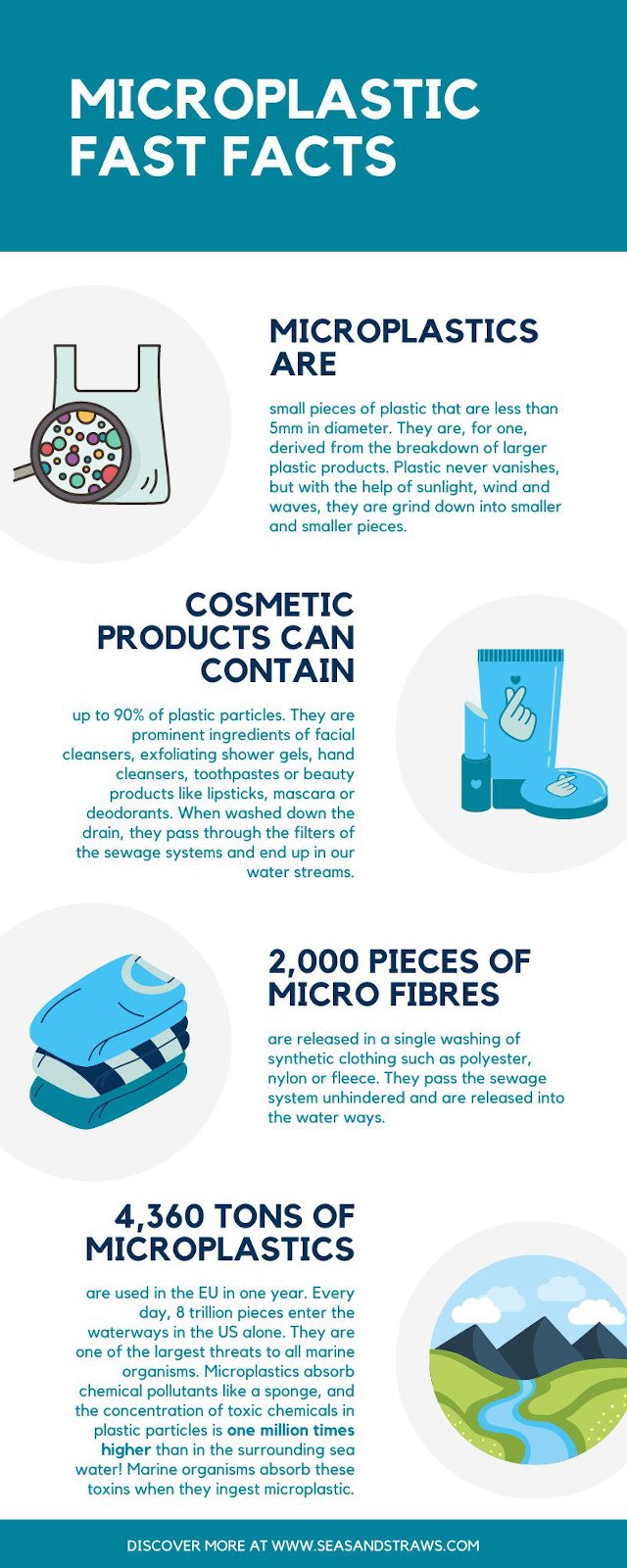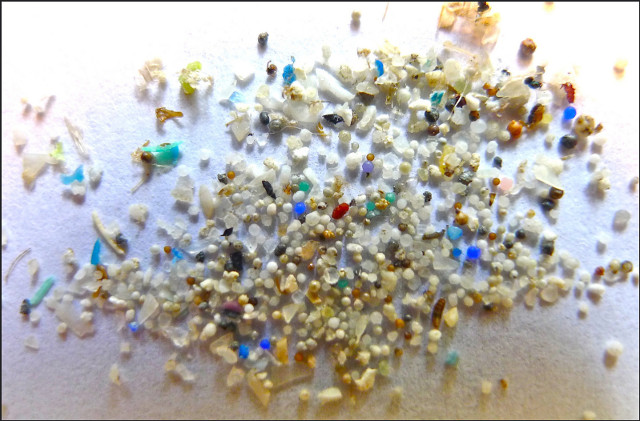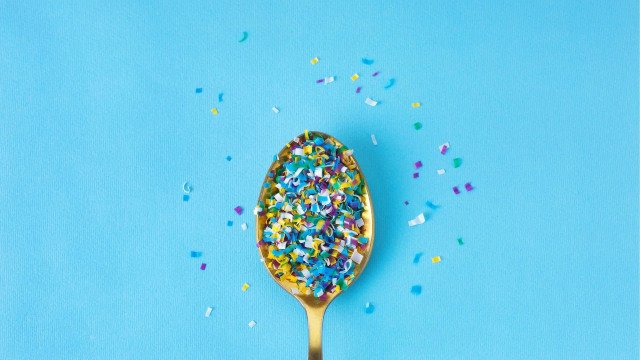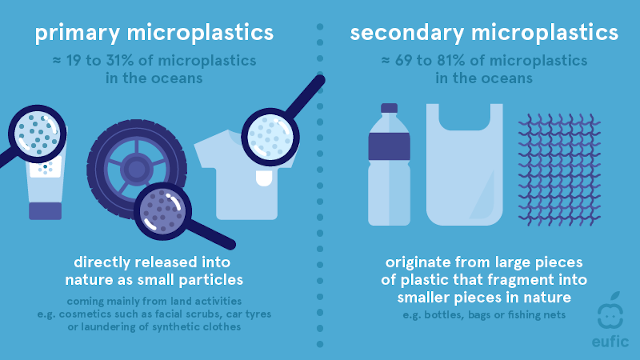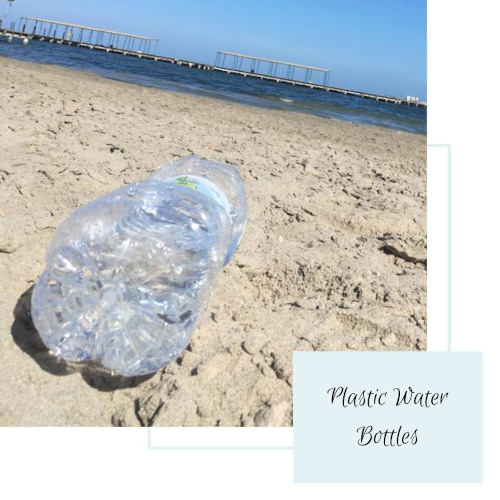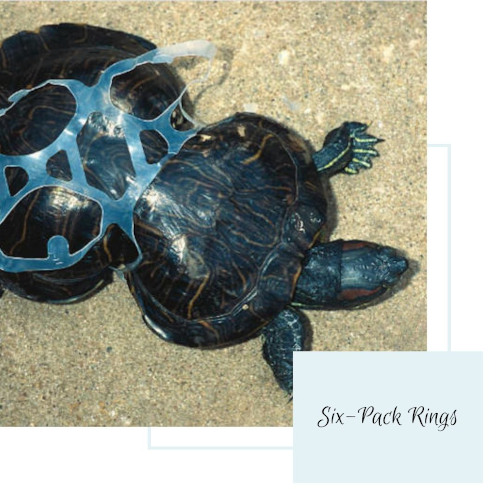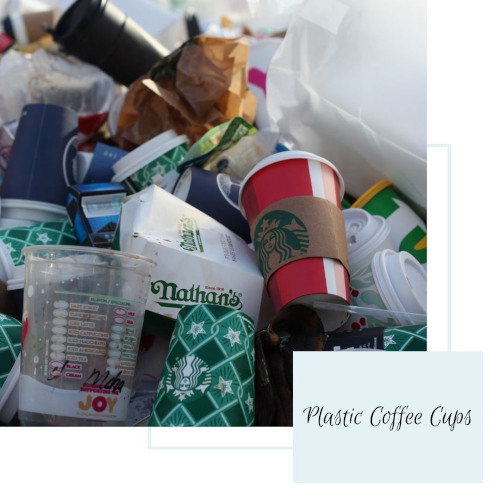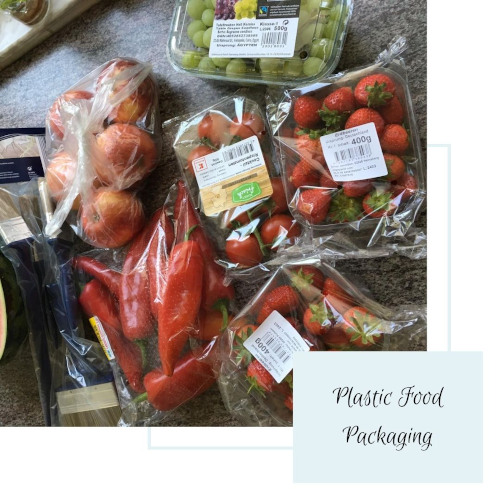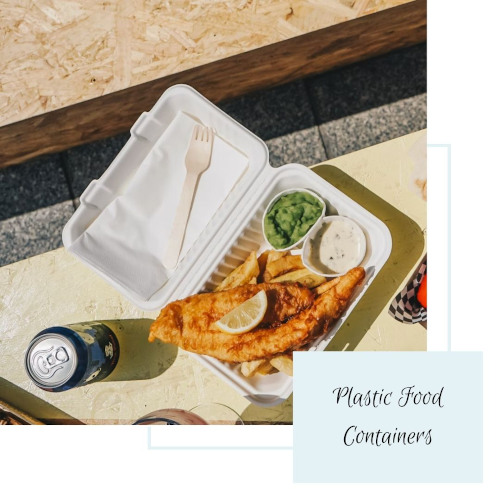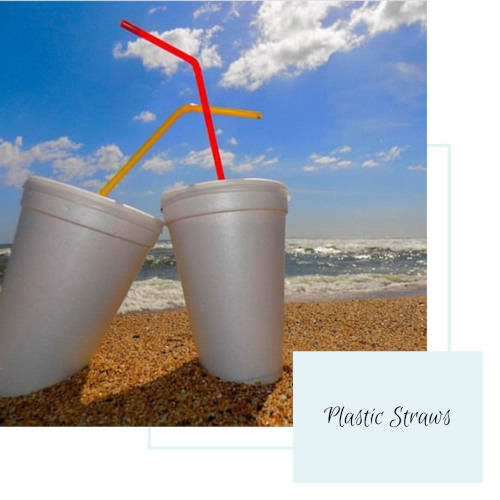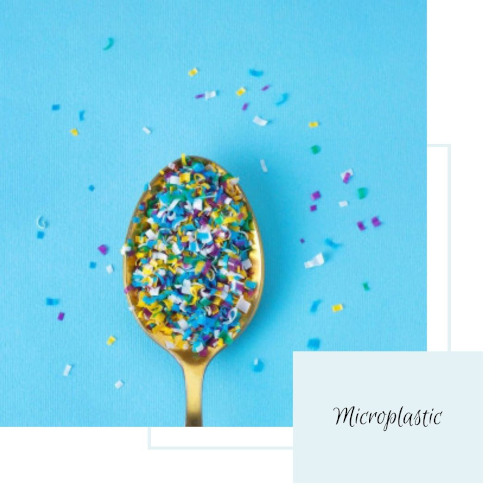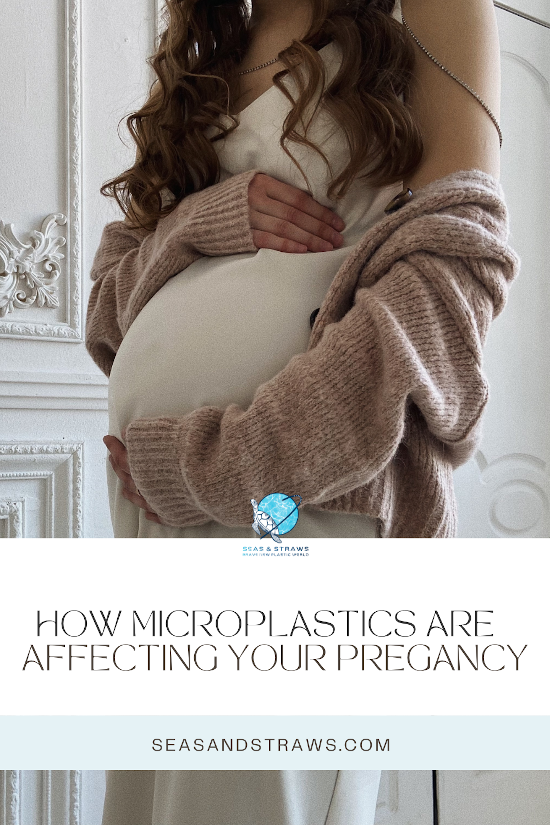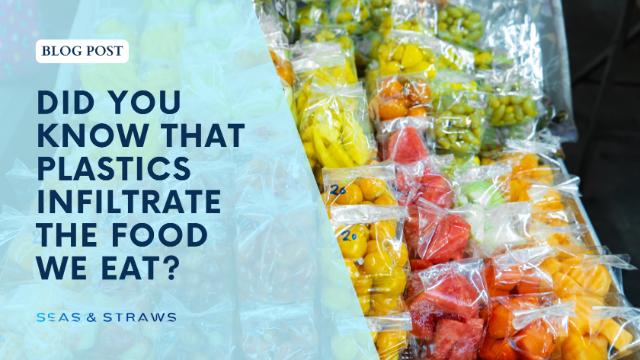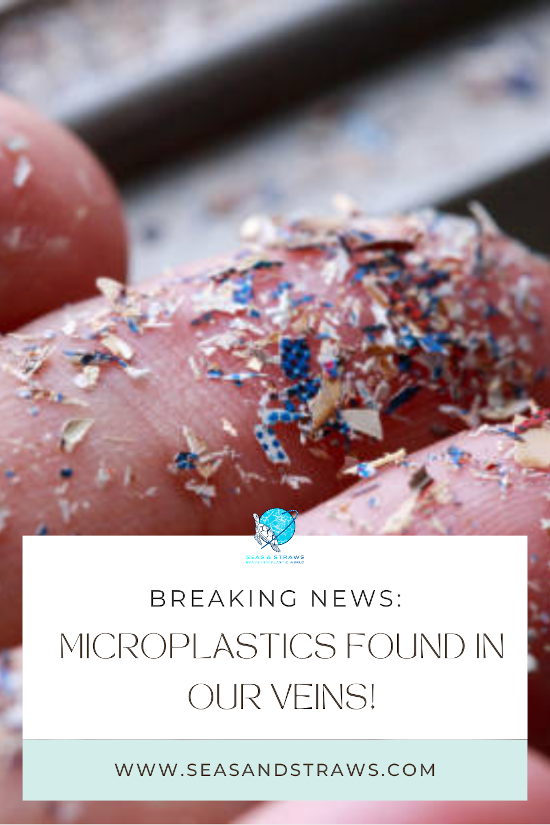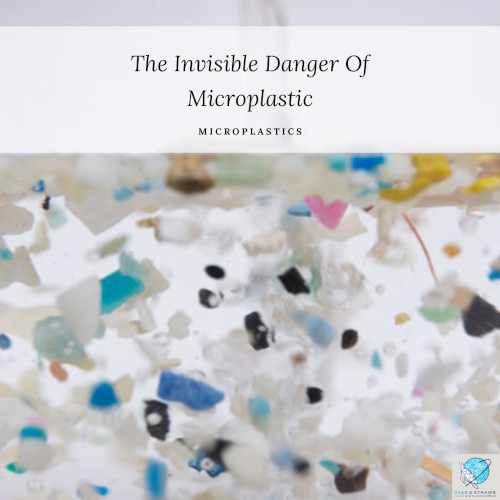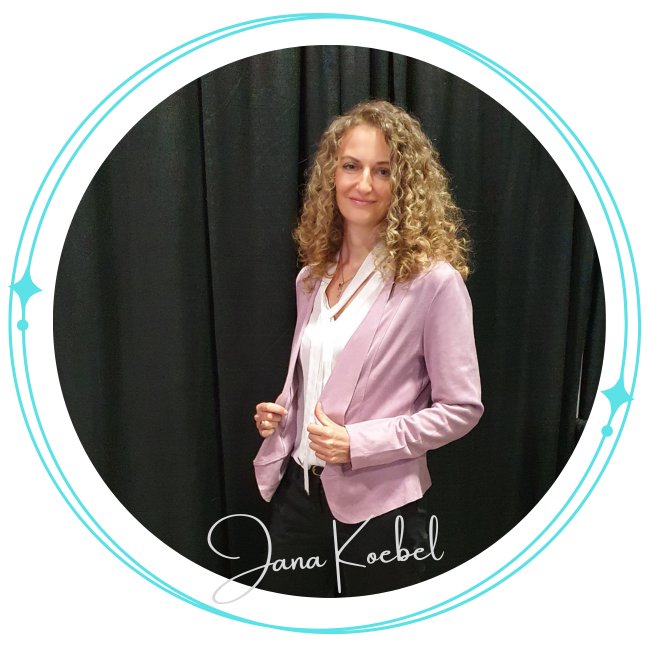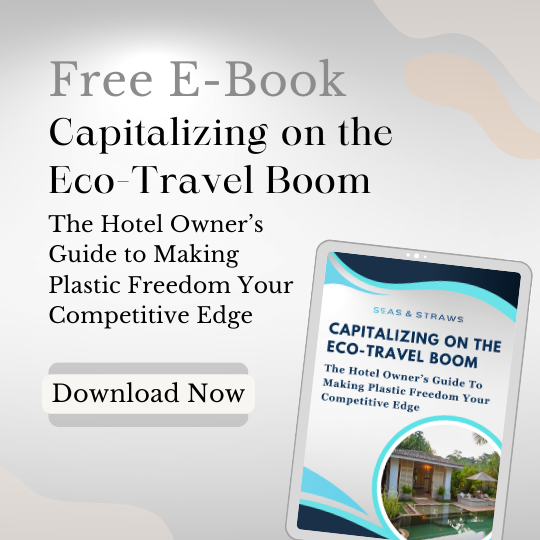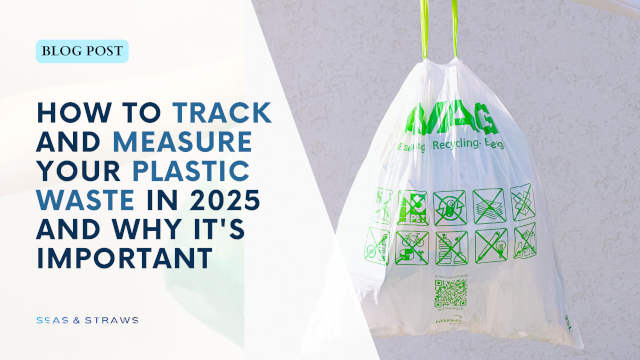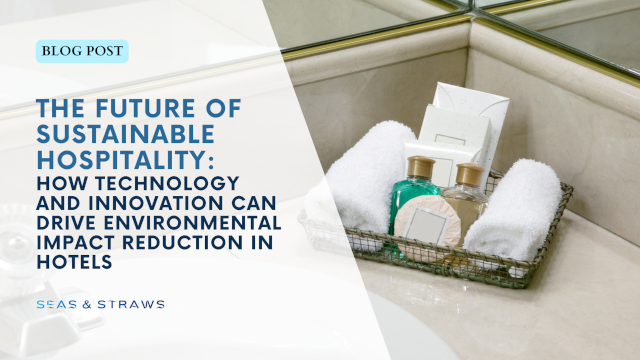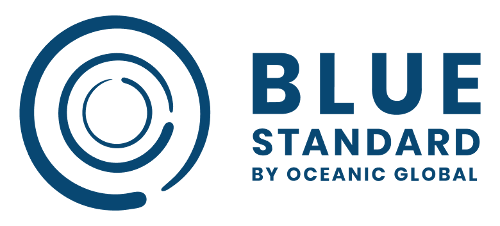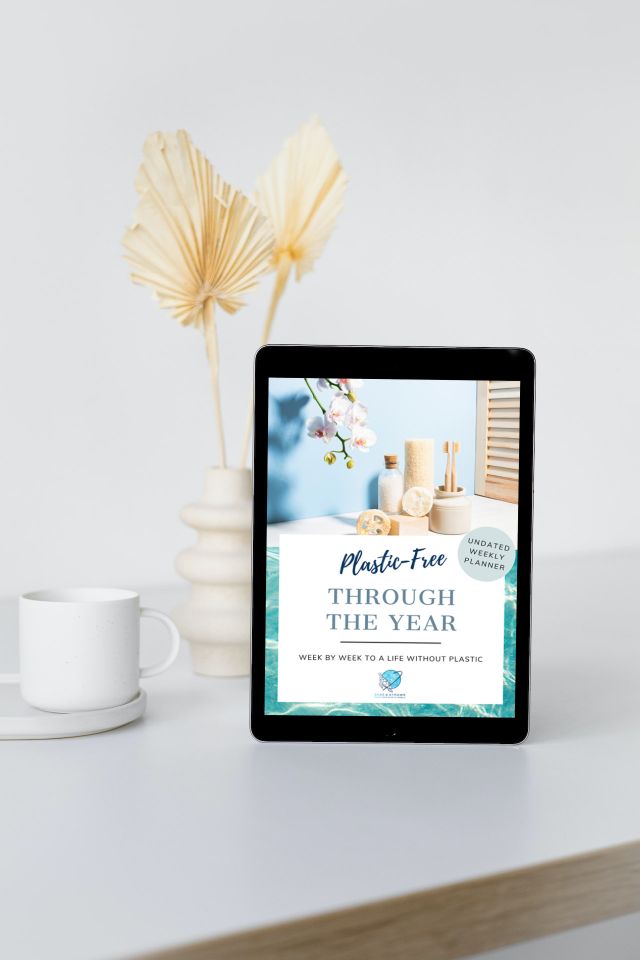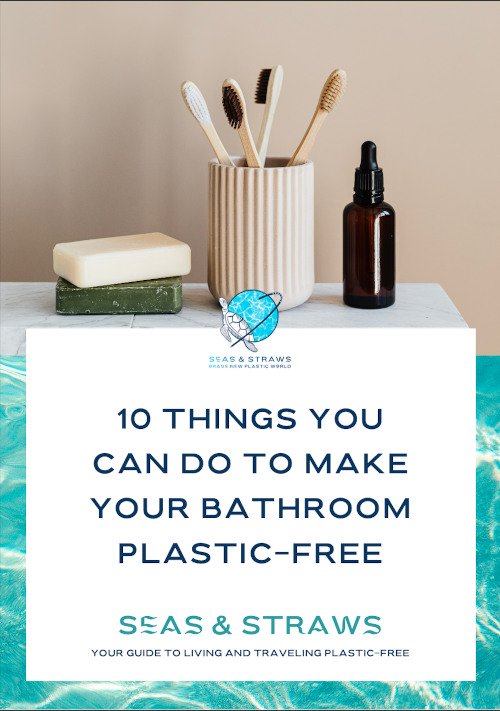- Home
- Plastic at Home
- Microplastic
The invisible danger of microplastic
Today I want to draw your attention to a plastic pollution problem that is not commonly known and not much talked about, simply because it is usually invisible to the eye. However, it has a large impact on all organisms in the food chain, humans included. Microplastic.
Microplastic is everywhere. There is no escape. It has been found in on the highest mountain and in the deepest parts of the ocean, on the remotest tropical island and the untamed planes of Antarctica.
According to a 2016 article by the National Geographic, 4,360 tons are used in the EU in one year. Every day, 8 trillion pieces enter the waterways in the US alone. In total, scientists predict that up to 230,000 tons are floating in the oceans today.
But what is it and where does it come from?
What are microplastics?
Microplastics are small pieces of plastic that are less than 5mm in diameter. They are usually classified into three common types.
1. Primary microplastics
They are deliberately manufactured and have a variety of applications.
Most often, they are prominent ingredients of everyday cosmetic products such as facial cleansers, exfoliating shower gels, hand cleansers, toothpastes or beauty products. Believe it or not but they are also used in lipsticks, mascara or deodorants. Did you know that you are eating plastic every time you lick your lips? Yuck.
Cosmetic products can contain and incredible 90% of plastic particles.
Unfortunately, they have replaced almost completely natural exfoliants like seeds or ground almonds. I still remember when I was first offered a new facial cleanser with synthetic exfoliating particles. The vendor proudly told me that this new invention was so much gentler to the skin than natural exfoliants. Of course I bought it.
How naive I was.
Microbeads in cosmetic products are used for not even 5 minutes but cause so much harm afterwards. They easily pass through the filters of the sewage systems and end up in our water streams.
 Microplastics are found in many cosmetic products, such as this shower gel
Microplastics are found in many cosmetic products, such as this shower gelThis is not their only application, though. Each year, billions and billions of lentil-sized and mostly translucent synthetic pellets are produced. The so-called nurdles are used to make almost all our plastic products like bottles, caps, bags or packaging. They are shipped around the world in their billions to be molded into shape, and every now and then, an accident happens and they are spilled into the ocean. Like the one that happened in February, when a container with 49 tons of nurdles fell from a ship in South Africa, leaving the country to face an ecological disaster. The tiny pellets are almost impossible to clean up, and they will pose a threat to wildlife for the next hundreds of years to come.
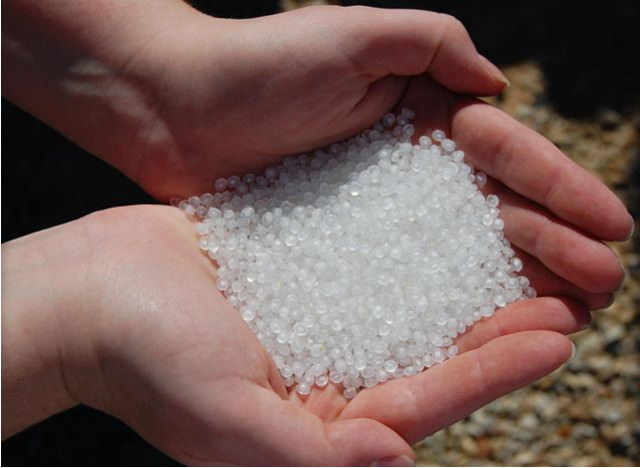 Primary Microplastic - Nurdles. Photo: gentlemanrook
Primary Microplastic - Nurdles. Photo: gentlemanrook53 billion nurdles escape into the environment every year - in the UK alone.
And thirdly, they are used in industrial cleaning products, for example to remove rust or paint from machinery, engines or boat hulls. During the process, they become contaminated with toxic chemicals and heavy metals which makes them especially dangerous to the marine ecosystem.
2. Secondary microplastics
Those are derived from the breakdown of larger plastic products. Plastic never vanishes, but with the help of sunlight, wind and waves, they are grind down into smaller and smaller pieces. All products from food containers to bottle lids, milk jugs, fishing nets and car tires undergo this process, even if it takes up to 1000 years. Once they are smaller than 5mm, we speak of microplastics.
These pieces are uneven and often have rugged, sharp edges which can perforate the throats and stomachs of marine organisms.
3. Other
Microplastic are also derived from the wear and tear of synthetic materials such as polyester, nylon or fleece. That fleece jumper you love to much releases 2,000 pieces of micro fibres in a single washing. They, too, pass the sewage system unhindered and are released into the water ways.
The danger to marine organisms
Microplastics are one of the largest threats to all marine organisms from plankton to tuna. Marine zooplankton is the base of the food chain and all aquatic life. Without it, the marine ecosystem would collapse. So it is very alarming that some parts of the ocean, for example the Great Pacific Garbage Patch, contain 6 times more plastic particles than plankton. Most comes from land, and more than half of it is single-use plastic.
Why is that alarming?
Microscopic pieces of plastic are ingested by zooplankton. Studies have shown that various types of plankton have plastic in their bodies. Larger pieces, on the other hand, have a size comparable to plankton and are easily mistaken for food by larger species. Either way, they are ingested by various marine creatures, from filter feeders to small fish. These, in turn, are eaten by larger fish such as tuna and swordfish.
All along the food chain, plastic particles accumulate in the bodies. Some organisms are unable to expel those particles, which results in reduced food intake and starvation due to a lack of nutrients. Even if the creature survives the intake of plastic, it ingests a high concentration of toxic chemicals.
Microplastics absorb chemical pollutants like a sponge. Researchers found that the concentration of toxic chemicals in plastic particles is one million times higher than in the surrounding sea water!
The toxins are lipophilic (have an affinity for fat), so they transfer from the plastic particle to the fatty tissues of the organisms. If a larger species eats those animals, the toxins transfer to their own tissue. The more a fish eats, the more toxins it accumulates.
Nowadays, microplastic is found in almost every species of bird, fish, turtle or marine mammal.
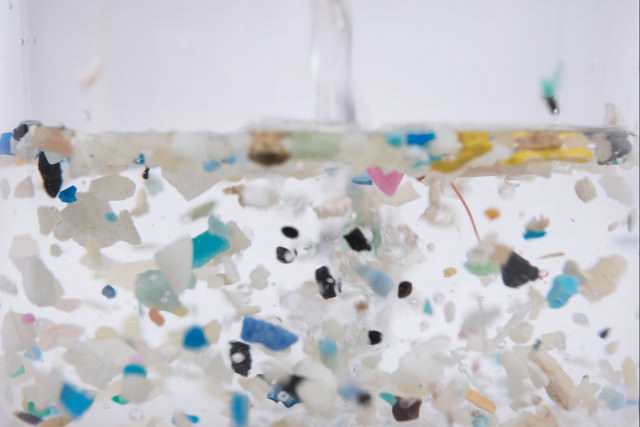 Microplastic in a water sample
Microplastic in a water sampleThe danger to humans
I think you get the picture. As I just said, most fish is contaminated with microplastic and toxic chemicals and those toxins accumulate along the food chain. Humans are at the top of the food chain. So it stands to reason that the toxins have reached their highest concentration when the fish finally ends up on our tables.
That is alarming because in many countries in the world, humans rely on fish as a source of protein. The more fish we eat, the more toxins we accumulate. Heavy metals are not the only cause for concern, though. Depending on the kind of plastic, marine debris contains additives like the ever-present BPA as well as flame retardants from clothes. BPA acts as endocrine discruptor and has been found in bottles, bottle caps and various other plastic fragments on beaches around the world.
Considering the 5.25 trillion pieces of plastic floating in the oceans right now, it is not surprising that microplastic is found literally everywhere, from table salt (especially sea salt) to tap water and almost all bottled water.
Studies already found microplastics in the human body, then in human faeces and lately in the human blood.
What can you do?
A lot.
- First and foremost, avoid all cosmetic products that contain microbeads. Learn to read labels. There are 67 different forms of microplastic used in cosmetic products. They often include (but are not limited to) Polyethylene (PE), Polypropylene (PP), Polyethylene terephthalate (PET), Polymethyl methacrylate (PMMA) and Nylon (PA). Support companies that have phased-out microplastics or switch to natural brands. Put pressure on mainstream brands. Or join the campaign "Beat the Microbead" which fights against microbeads in cosmetic brands. They also have a free app with which you can scan your products to find out if they include any of the above plastics.
- Try to avoid synthetic clothes such as polyester or fleece. Go for natural materials like cotton instead. They biodegrade.
- I'm not telling you to stop eating fish. You have to decide that for yourself. I still eat fish (and I love sushi) but I do so with a bad feeling in my gut. Do what works best for you.
get the facts!
Want to arm yourself with more facts? Save or download this handy summary of the article above. You can share it freely, I just ask that you credit Seas & Straws.
Download the fact sheet (pDF)
Click here to download your fact sheet on microplastic.
The Most Common Everyday Plastic Items
Click on the image to know more.
The journey to zero plastic waste can be difficult to figure out though-which is why I created this weekly planner “Plastic Free Through The Year” to help guide you! Each week, you’ll be given new ways to make the sustainable transition and a template to keep yourself accountable and productive. Start your journey today.
Get Your Weekly Planner
Plastic-Free Through The Year
